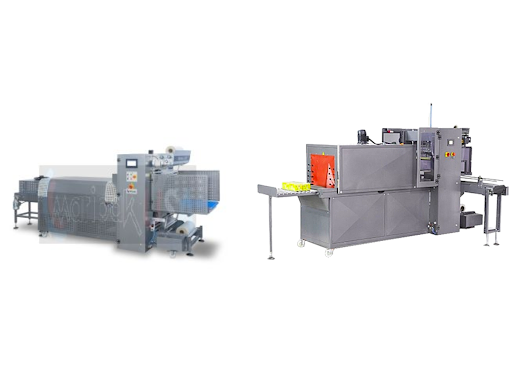Shrink packaging has become an essential component of modern manufacturing, offering businesses a versatile, efficient, and cost-effective way to package products across various industries. Whether it’s securing items for transportation or enhancing the aesthetic appeal of consumer goods, shrink packaging machines play a crucial role in the production line. However, choosing the right shrink packaging machine for your business can be challenging, given the diverse range of options available. In this blog, we’ll explore the different types of shrink packaging machines and their applications across various industries.
1. Shrink Wrap Systems
Shrink wrap systems are widely used across numerous industries, from food and beverage to electronics and pharmaceuticals. These machines use a heat-sealable plastic film that shrinks tightly around the product when exposed to heat. The result is a secure, tamper-proof package that protects the contents from dust, moisture, and damage during transit.
a. L-Bar Sealers
L-Bar sealers are one of the most common types of shrink-wrap machines, named for their L-shaped sealing arm. They are ideal for low to medium-volume operations and are often used in industries where speed and efficiency are critical.
b. I-Bar Sealers
I-bar sealers, also known as straight-bar sealers, are typically used for smaller operations or for packaging irregularly shaped items. These machines are more manual than L-Bar sealers, requiring the operator to wrap the product in shrink film and seal it using a single bar.
c. Automatic and Semi-Automatic Shrink Wrap Machines
For larger operations, automatic and semi-automatic shrink wrap machines offer increased efficiency and speed. These machines automate the wrapping and sealing process, reducing the need for manual labor and increasing output.
2. Shrink Sleeve Machines
Shrink sleeve machines are designed specifically for applying shrink sleeves to products. These machines are commonly used in industries like beverages, cosmetics, and pharmaceuticals, where branding and product presentation are key.
a. Stretch Sleeve Applicators
Stretch sleeve applicators are used to apply stretchable plastic sleeves to products without the need for heat. These sleeves conform tightly to the product’s shape, providing a secure and attractive package.
b. Heat Shrink Sleeve Applicators
Heat shrink sleeve applicators use heat to shrink the sleeves around the product, ensuring a tight and secure fit. These machines are widely used in industries where product security and tamper evidence are essential.
3. Shrink Bundling Machines
Shrink bundling machines are designed to wrap multiple items together in a single package. These machines are commonly used in industries like food and beverage, where products like cans, bottles, or cartons need to be bundled together for easier handling and transportation.
a. Sleeve Wrappers
Sleeve wrappers are a type of shrink bundling machine that wraps products in a sleeve of plastic film, leaving the ends open. The products are then passed through a heat tunnel, where the film shrinks tightly around them, securing them together.
b. Shrink Bundlers with Sealing Bars
Shrink bundlers with sealing bars are used for more secure bundling applications. These machines fully enclose the products in shrink film, sealing the edges before shrinking the film. This type of shrink bundling is commonly used in industries where the bundled products need to be protected from external elements during transit, such as in the case of building materials or large consumer goods.
Conclusion
Understanding the different types of shrink-packaging machines is essential for selecting the right equipment for your business. Each machine offers unique features and benefits that cater to specific industries and packaging needs. Whether you’re looking to enhance your product’s appearance, improve packaging efficiency, or meet industry-specific requirements, choosing the right shrink packaging machine is a critical step toward achieving your business goals. By investing in the right equipment, you can streamline your packaging process, reduce costs, and ultimately deliver a better product to your customers.


